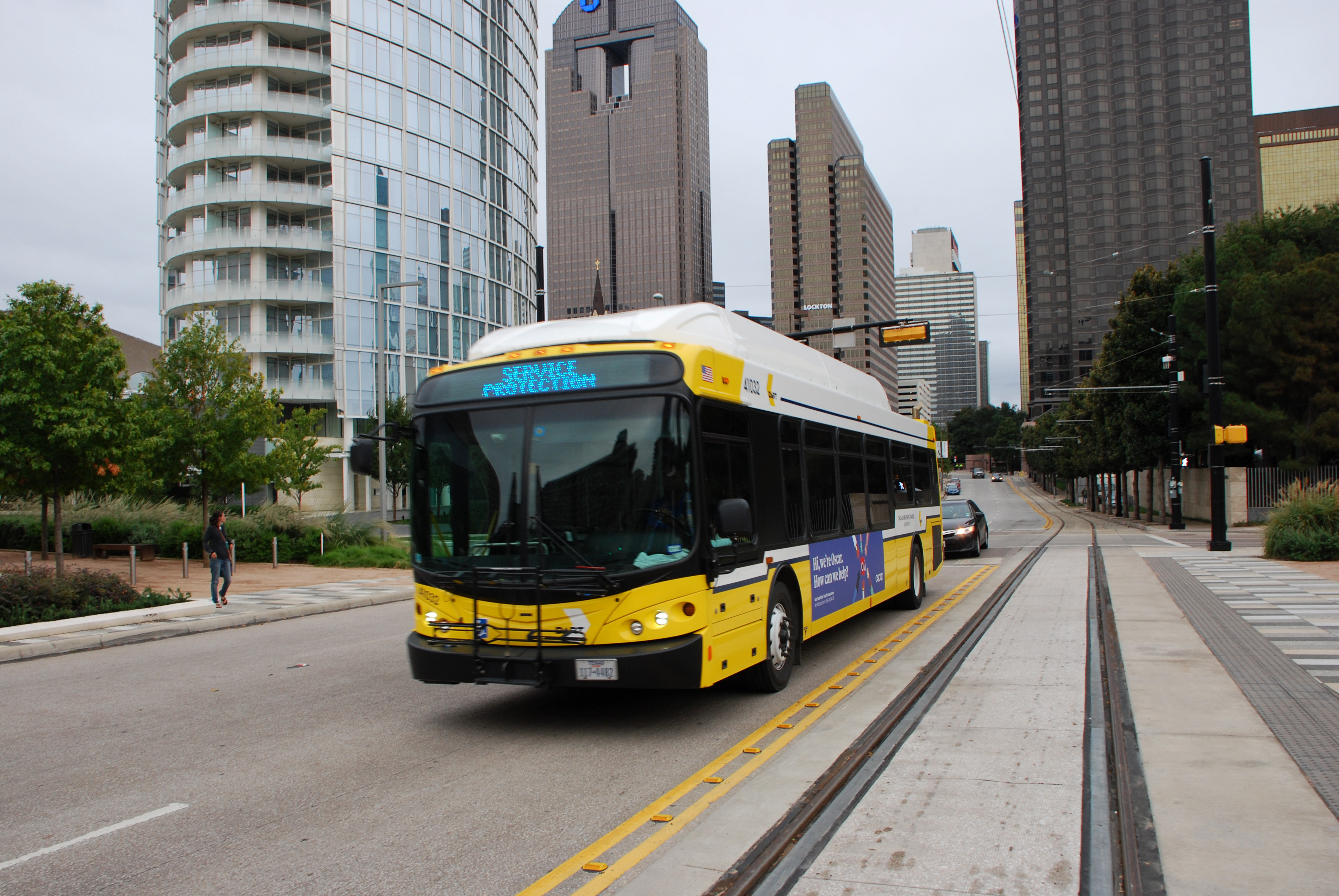
Dallas’ transit agency, DART, may be poised to change its decades-long priority of building suburban rail at the expense of city transit service. With the Dallas City Council’s appointment of four new DART board members in June and Walkable DFW founder Patrick Kennedy last December, a long-overdue conversation is unfolding about what a regional public transportation system ought to look like and who it should serve.
DART’s grandiose distance over density rail-building approach over the past 30 years has resulted in system that looks far more impressive on a map than it does to anyone actually waiting for a train or bus. Indeed, Dallas can boast of the longest light-rail system in the country – but one with stagnating ridership that’s also the least cost-effective. Moreover, Dallas bus riders contend with some of the longest commutes in the country. This severely limits opportunities for residents – a study from the University of Texas at Arlington linked deficient public transit to Dallas’ lack of economic mobility.
Dallas also performs poorly on the measure of frequent transit. According to an analysis using the Center for Neighborhood Technology’s AllTransit tool, roughly nine-tenths of Dallas residents live within a half-mile of transit service – but just 2% live within a half-mile of frequent transit. That’s fewer than in Houston, Denver, Miami, or Charlotte.
However, DART’s focus on inefficient rail mileage is now being strongly contested. Over the past year, most of the DART board’s oxygen has been taken up by two major light rail projects – the Cotton Belt suburb-to-suburb line and the D2 connection through downtown Dallas. But the City Council’s replacement of status-quo oriented suburban board members with city transit-riding advocates has shifted the dialogue to the need to improve the frequency and dependability of a bus network. Both rail projects would require the agency to take on substantial new debt, and several of the new appointees have indicated they won’t approve new borrowing until they have funding plans in place for affording bus service improvements.
This shift in the rhetorical and political landscape happened quickly, and owes much to the contributions of Patrick Kennedy. An architect by training and longstanding critic of Dallas’ car-centric built environment, Kennedy formed a SuperPac in 2015, recognizing that “if we can’t change the minds of who is in office, we have to change who is in office.” The PAC gained initial infamy by advocating for the teardown of I-345 and raising sizable sums of money for progressive city council candidates. However, it quickly found its legs on transit issues such as the 2016 debate over the D2 subway alignment. As he explains, “Throughout that process, I was in front of DART Board quite often and last December City Council said, ‘guess what, there’s an opening on the board, you’re on it – go fix things now.’”
According to Kennedy, the current challenge at DART is to determine what it can realistically accomplish as a cash-strapped agency charged with serving a sprawling, low density metropolis. He’s starting by identifying short term wins for transit riders, such as bus shelters, system legibility and walkability improvements.
But the challenge is also to redefine what good transit means. The way Kennedy sees it, good transit is less about rail versus bus and more about having dedicated rights of way, all day frequency, and reliability. Many of DART’s member cities don’t see it that way – historically, they’ve thought that it means trains, exclusively. “Most people have never seen a well performing bus and frankly don’t know it can exist. We have to overcome perception as well as reality, and part of this whole process is demonstrating what high quality bus lines can look like.”
However, tangible improvements to bus performance like dedicated lanes and funding for high frequency live or die by the support of elected officials, and it remains to be seen who will emerge as a champion within the city of Dallas. Kennedy thinks the growing political interest in improving transit creates an unprecedented window for cooperation between DART and the City, and he views himself as a go-between. Kennedy is pushing DART staff to determine their 10-15 best potential transit priority corridors, with the goal of shopping them to City Council and saying, “who wants one in your district, what can we get away with and do you have any dollars?”
Kennedy also recognizes the importance of completely redesigning the bus network, reevaluating parking policies and changing land-uses across the city to encourage more transit-supportive neighborhoods. But his philosophy as board member stresses the need for immediacy. “As an agency, the first thing we need to do is fix the lives of our current riders, or we’ll never be able to attract anyone else. Until people see there’s better service and we’re not in the press for driving people into poverty, we’ll never see ridership increases.”
 On the Brink: Will WMATA’s Progress Be Erased by 2024?
On the Brink: Will WMATA’s Progress Be Erased by 2024?
The experience of being a WMATA rider has substantially improved over the last 18 months, thanks to changes the agency has made like adding off-peak service and simplifying fares. Things are about to get even better with the launch of all-door boarding later this fall, overnight bus service on some lines starting in December, and an ambitious plan to redesign the Metrobus network. But all of this could go away by July 1, 2024.
Read More A Bus Agenda for New York City Mayor Eric Adams
A Bus Agenda for New York City Mayor Eric Adams
To create the “state-of-the-art bus transit system” of his campaign platform, Mayor Adams will have to both expand the quantity and improve the quality of bus lanes. We recommend these strategies to get it done.
Read More